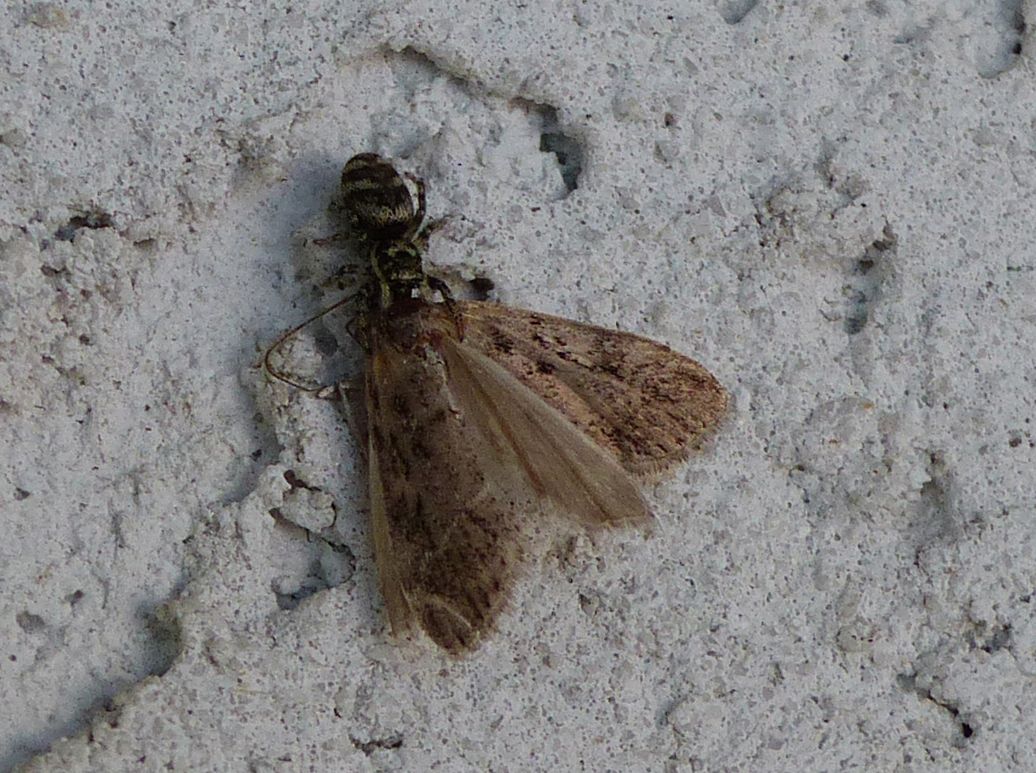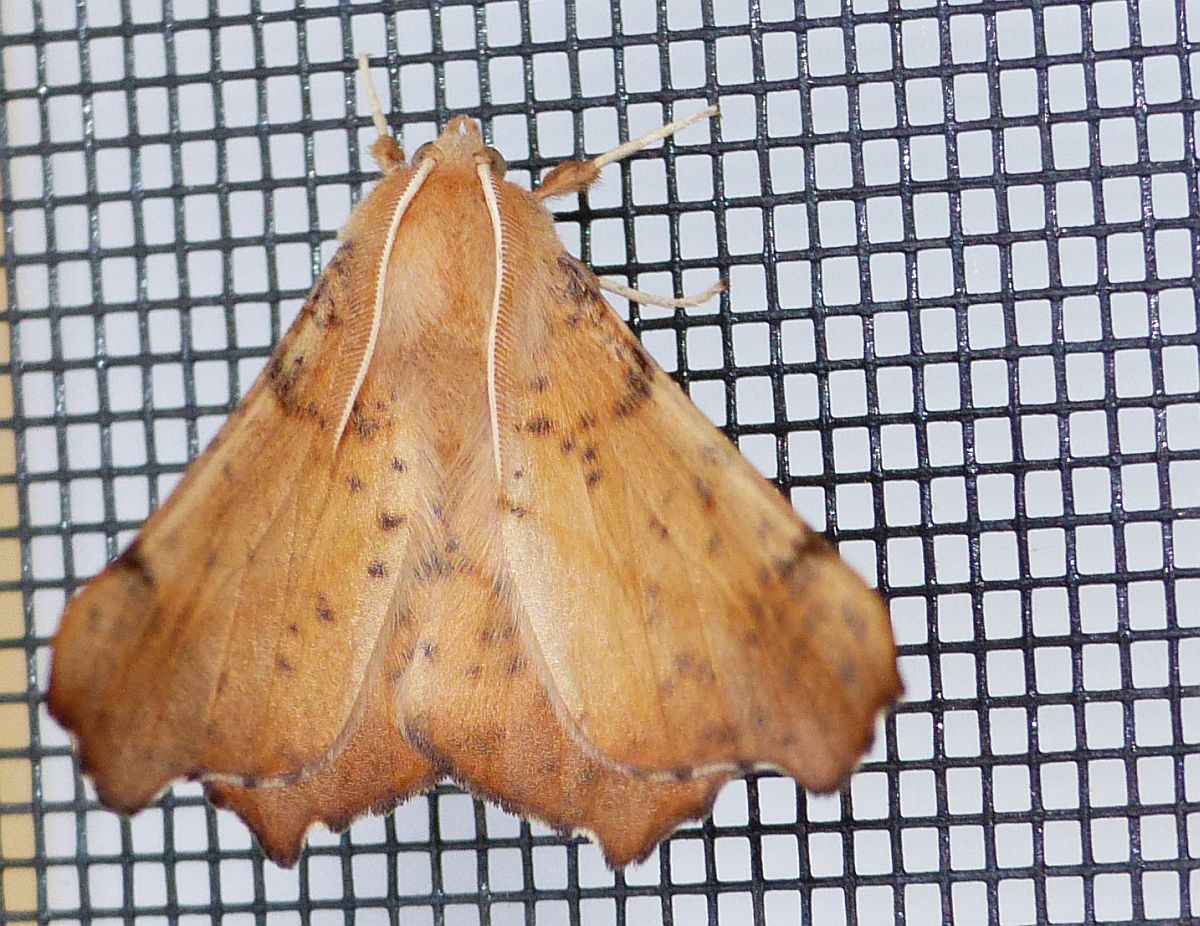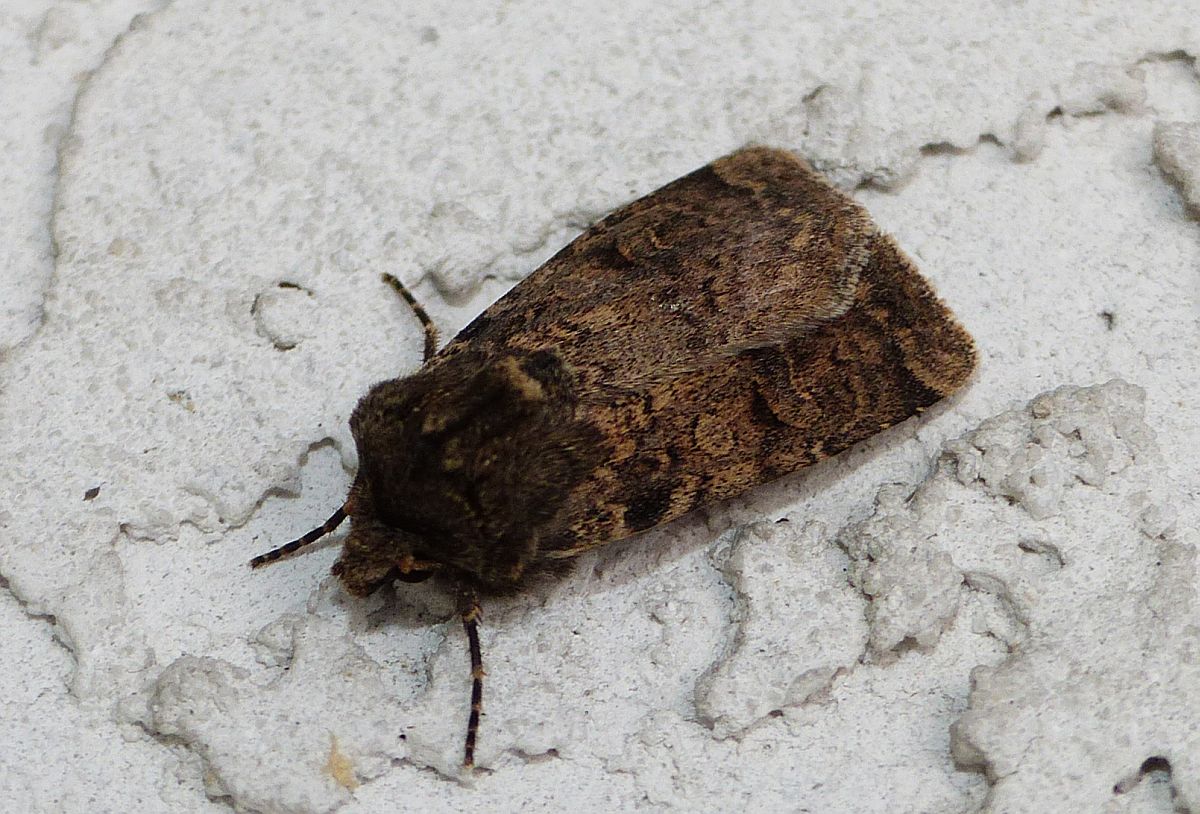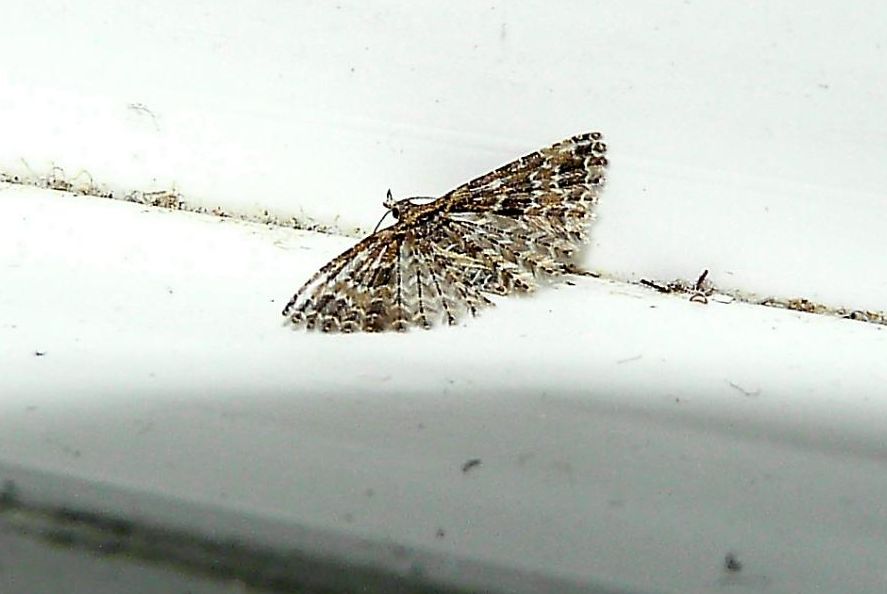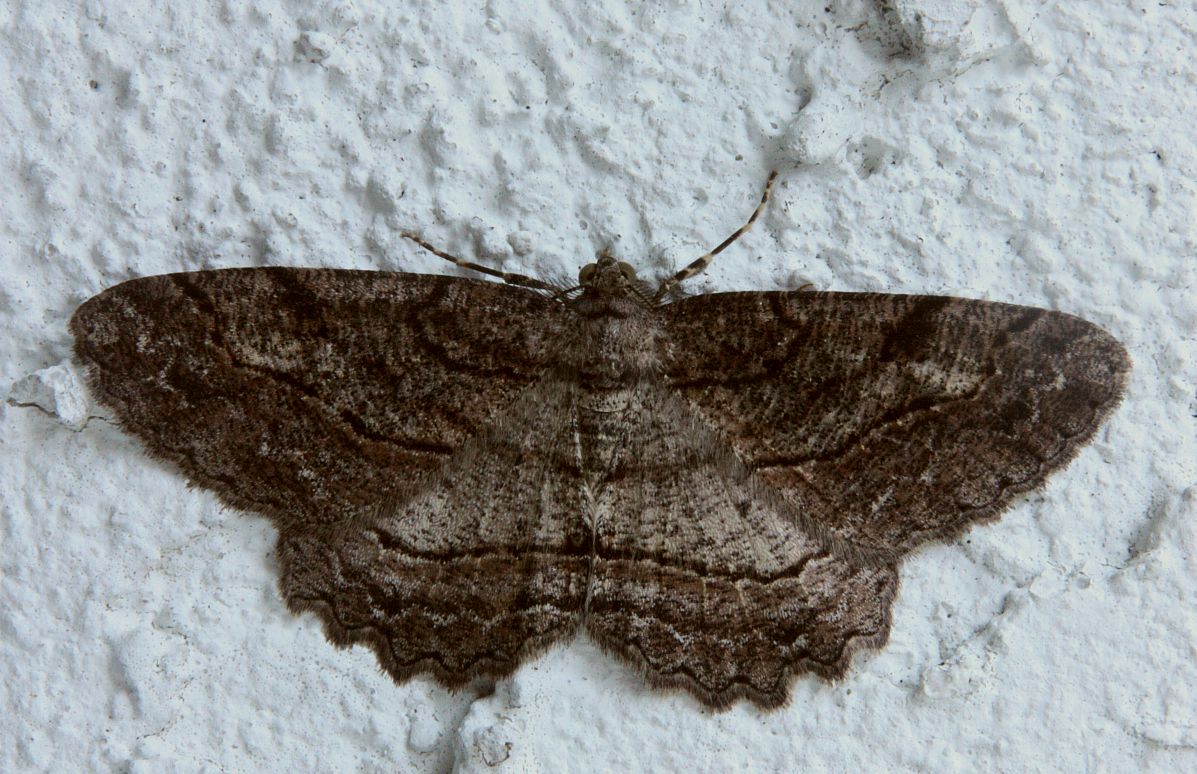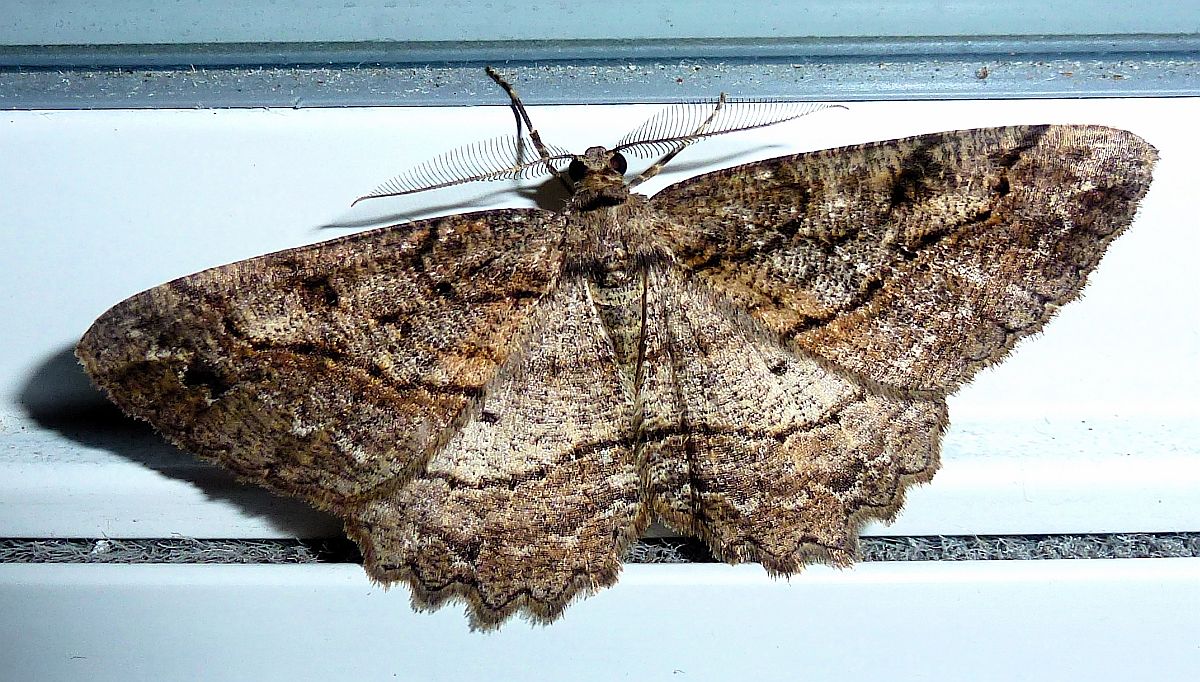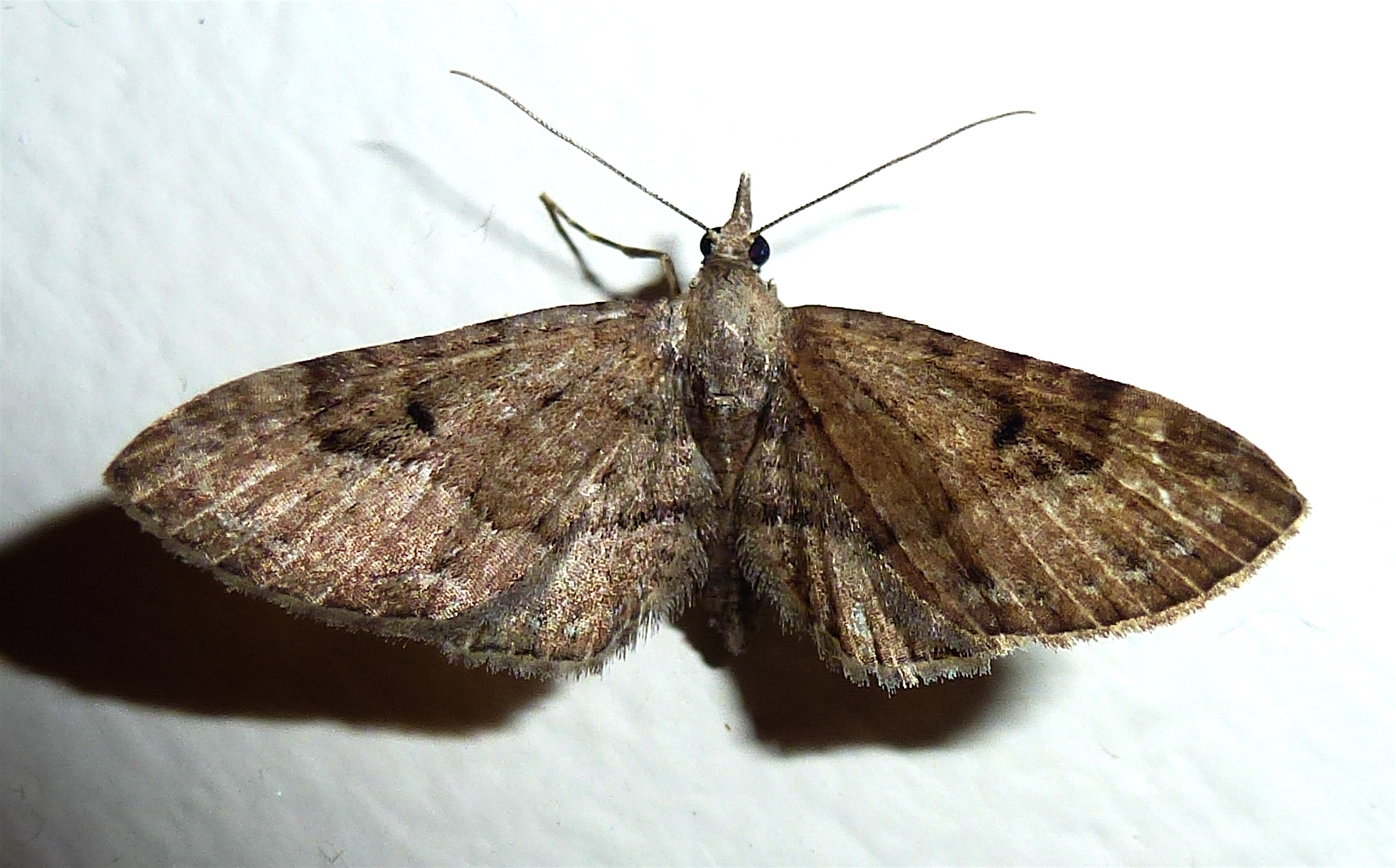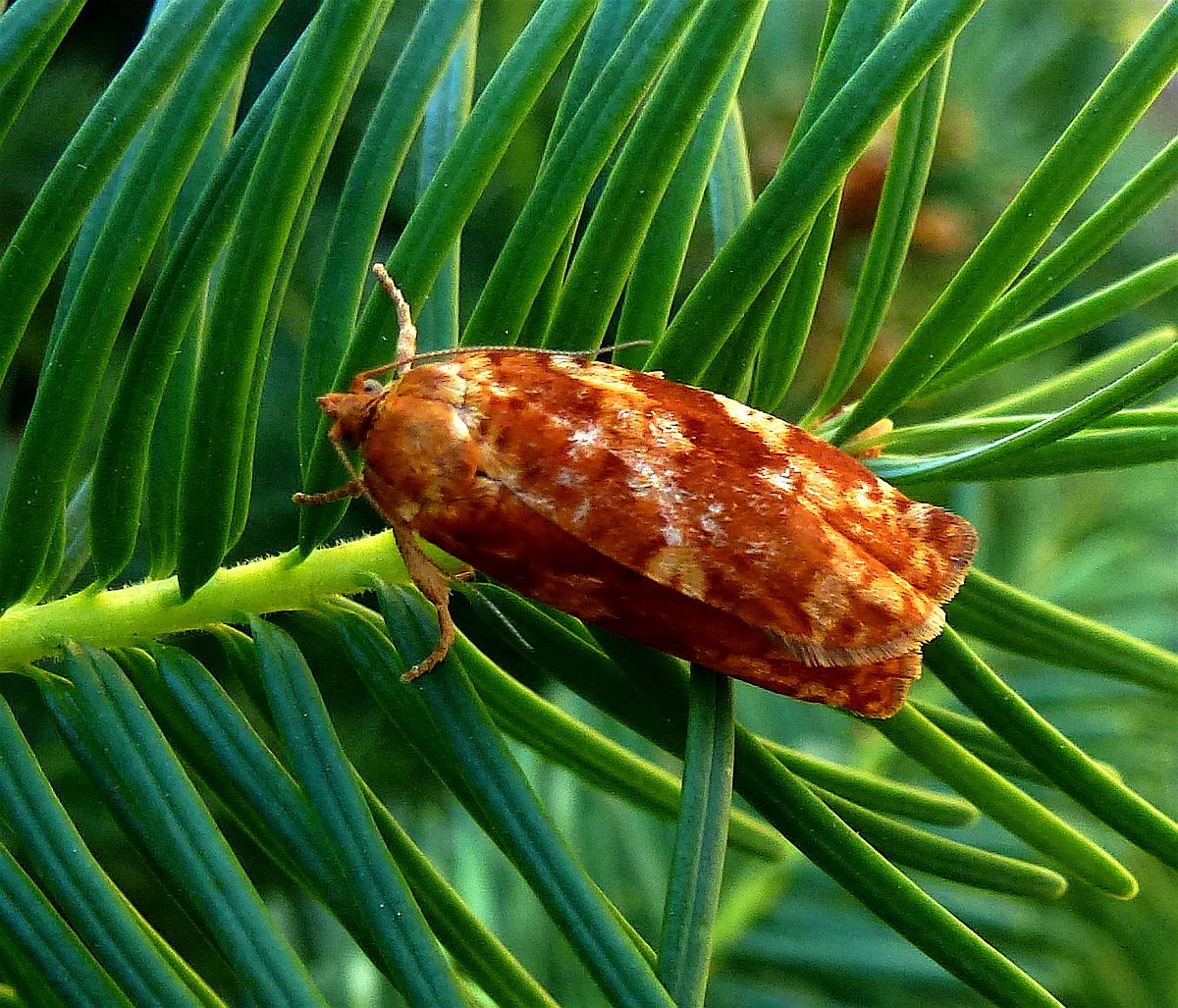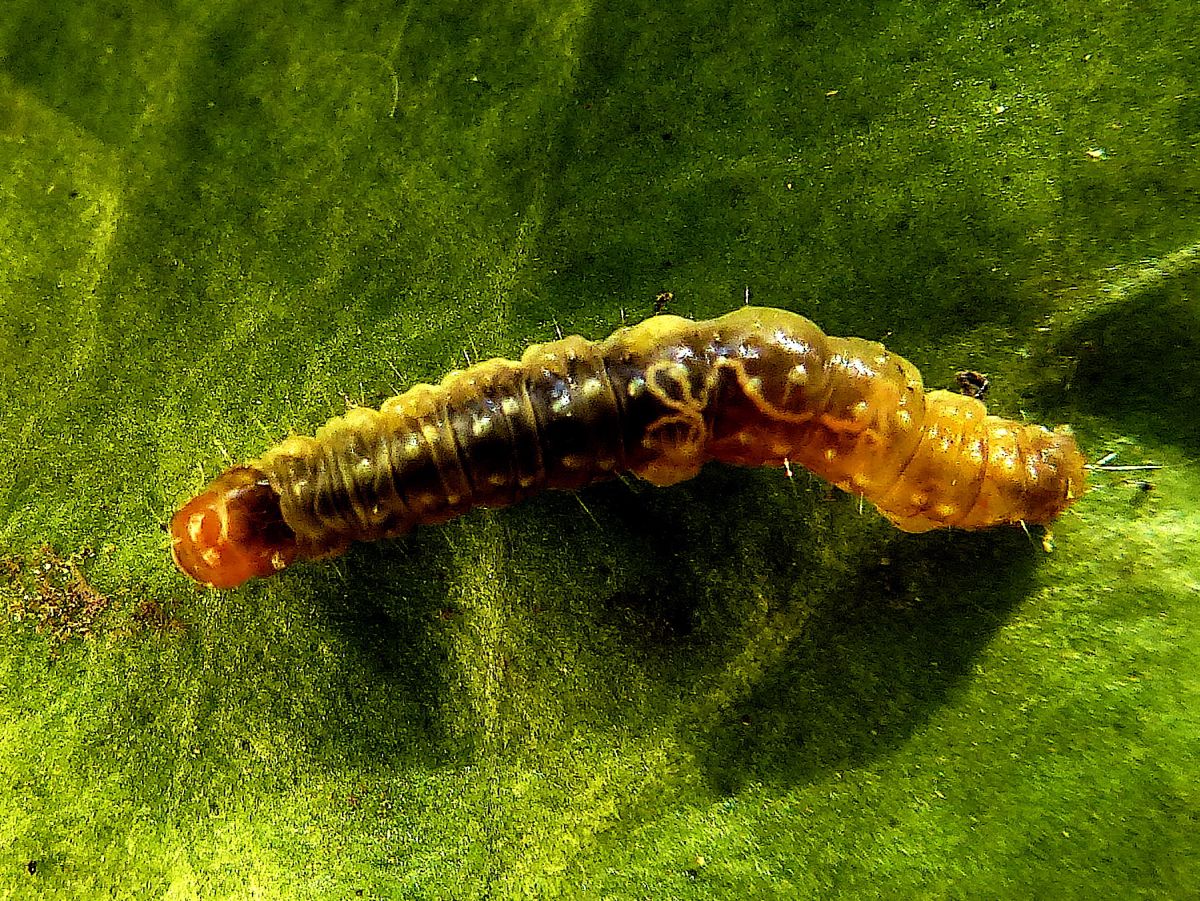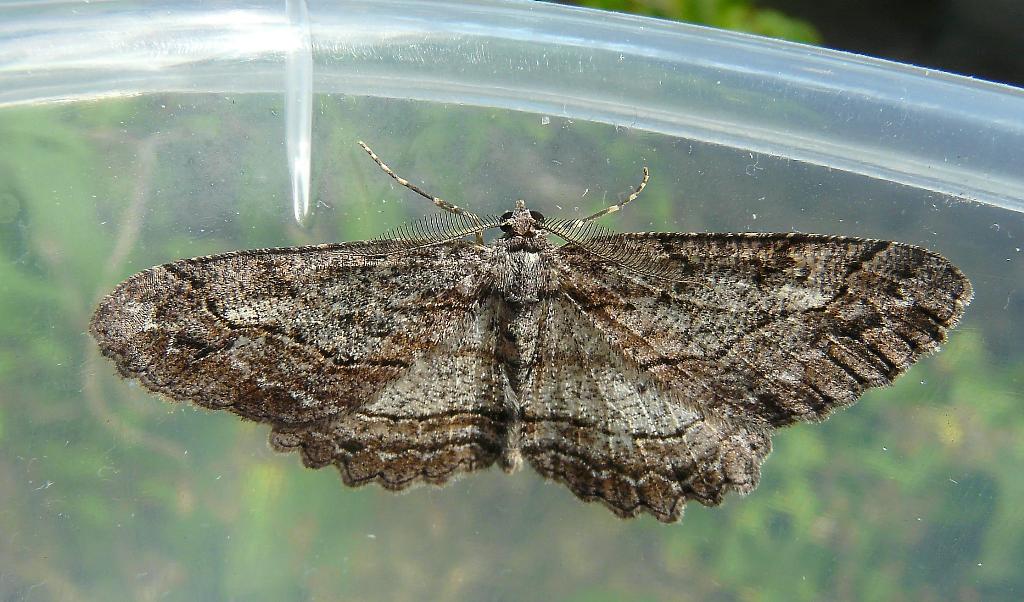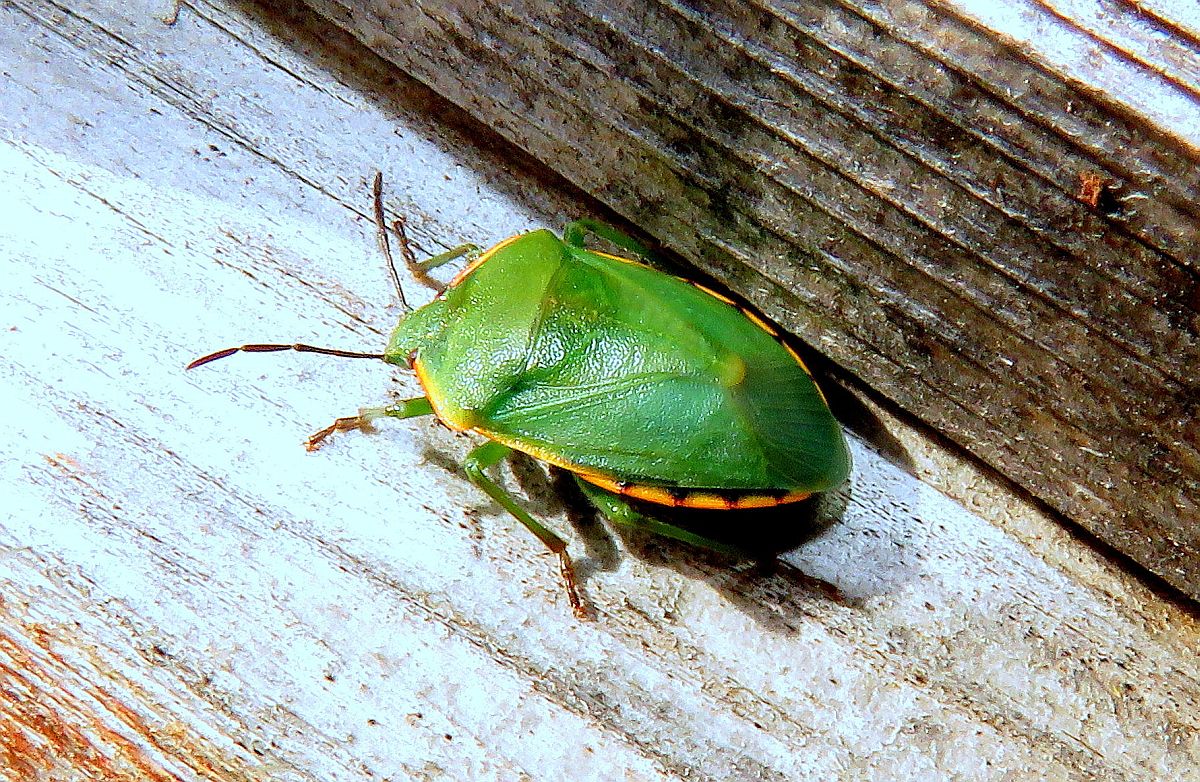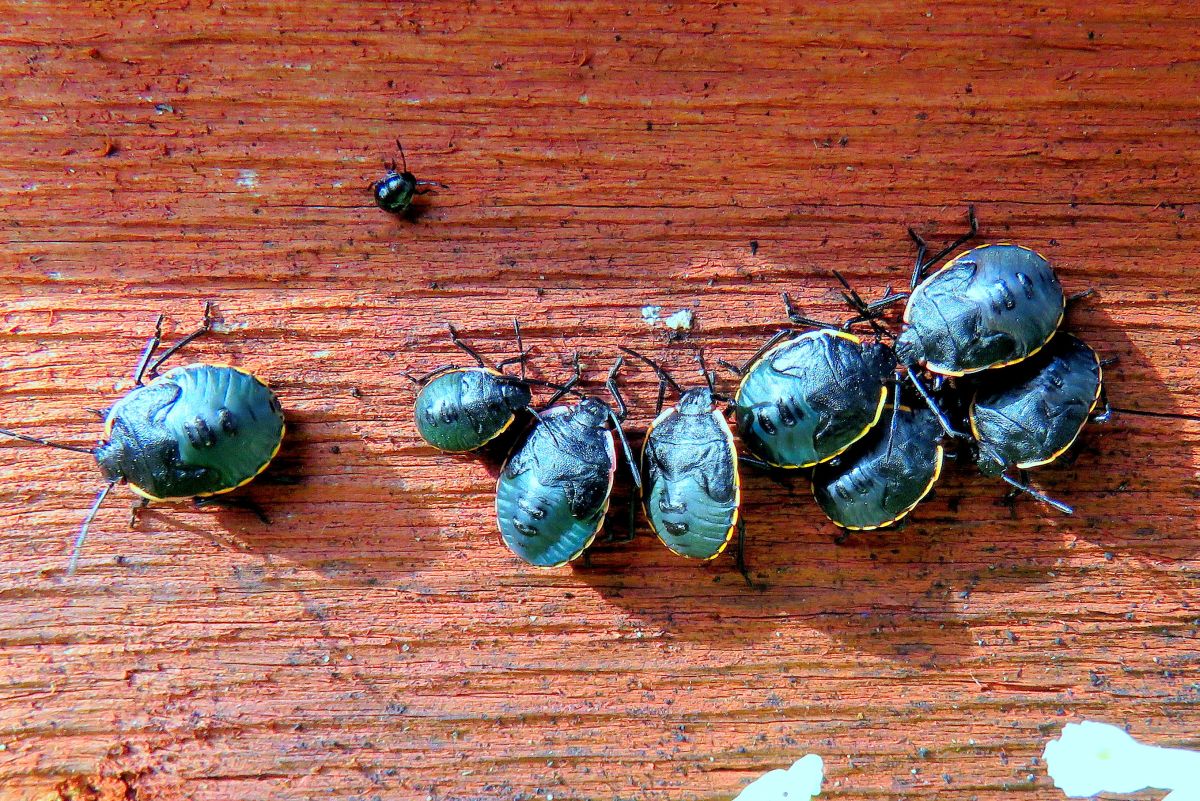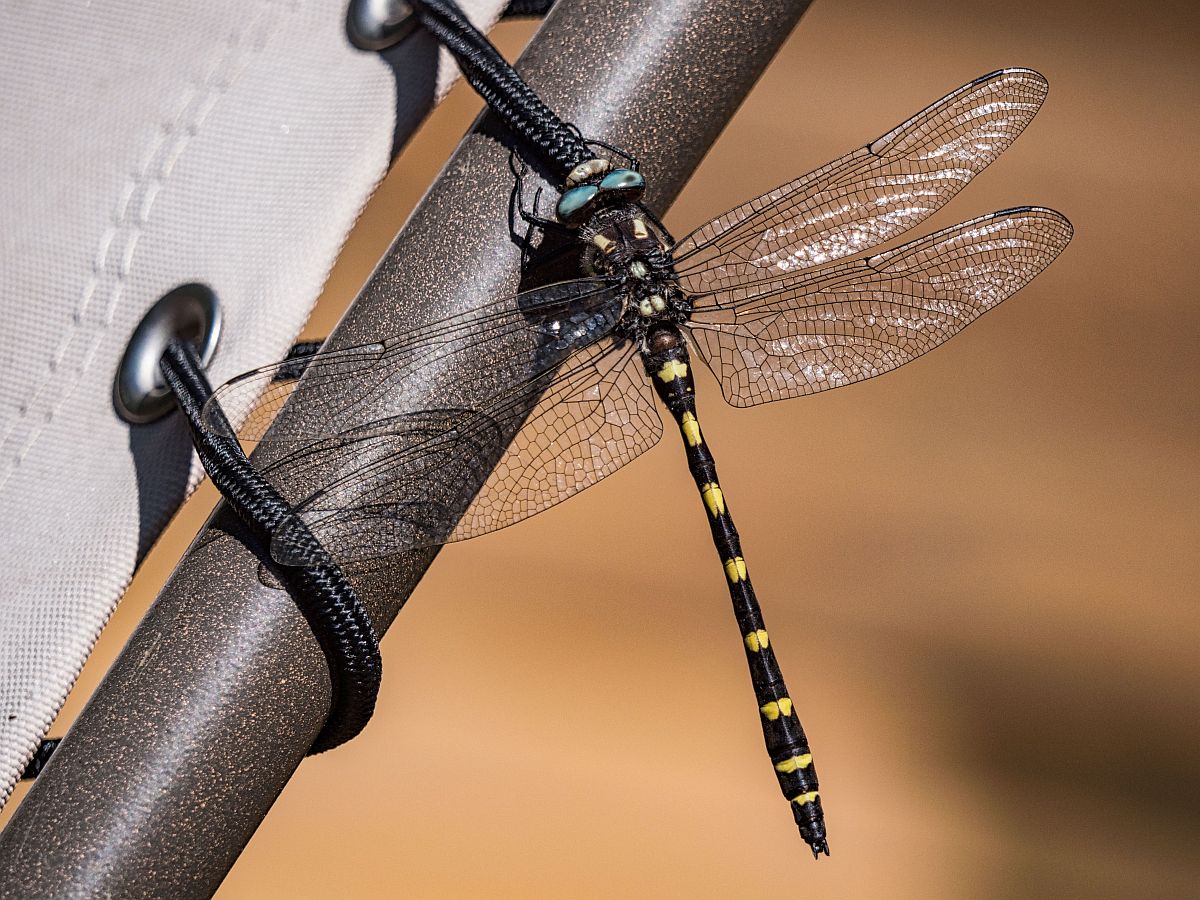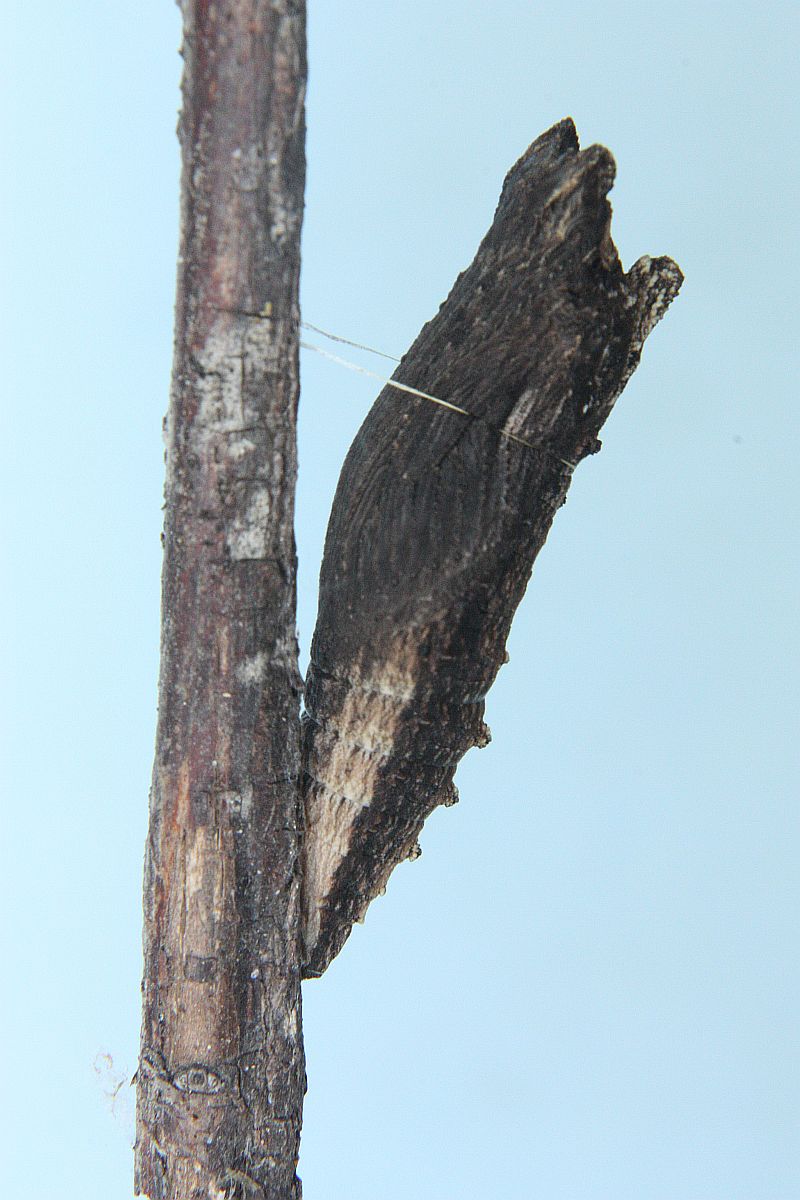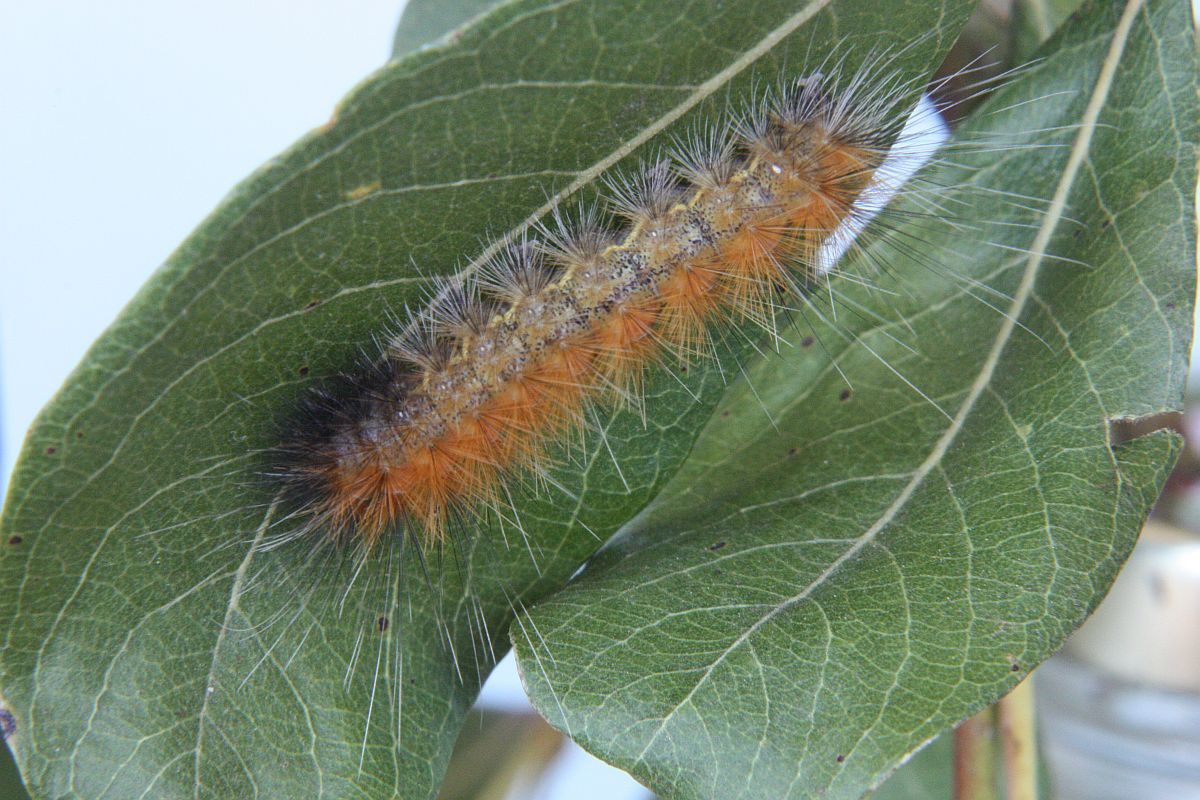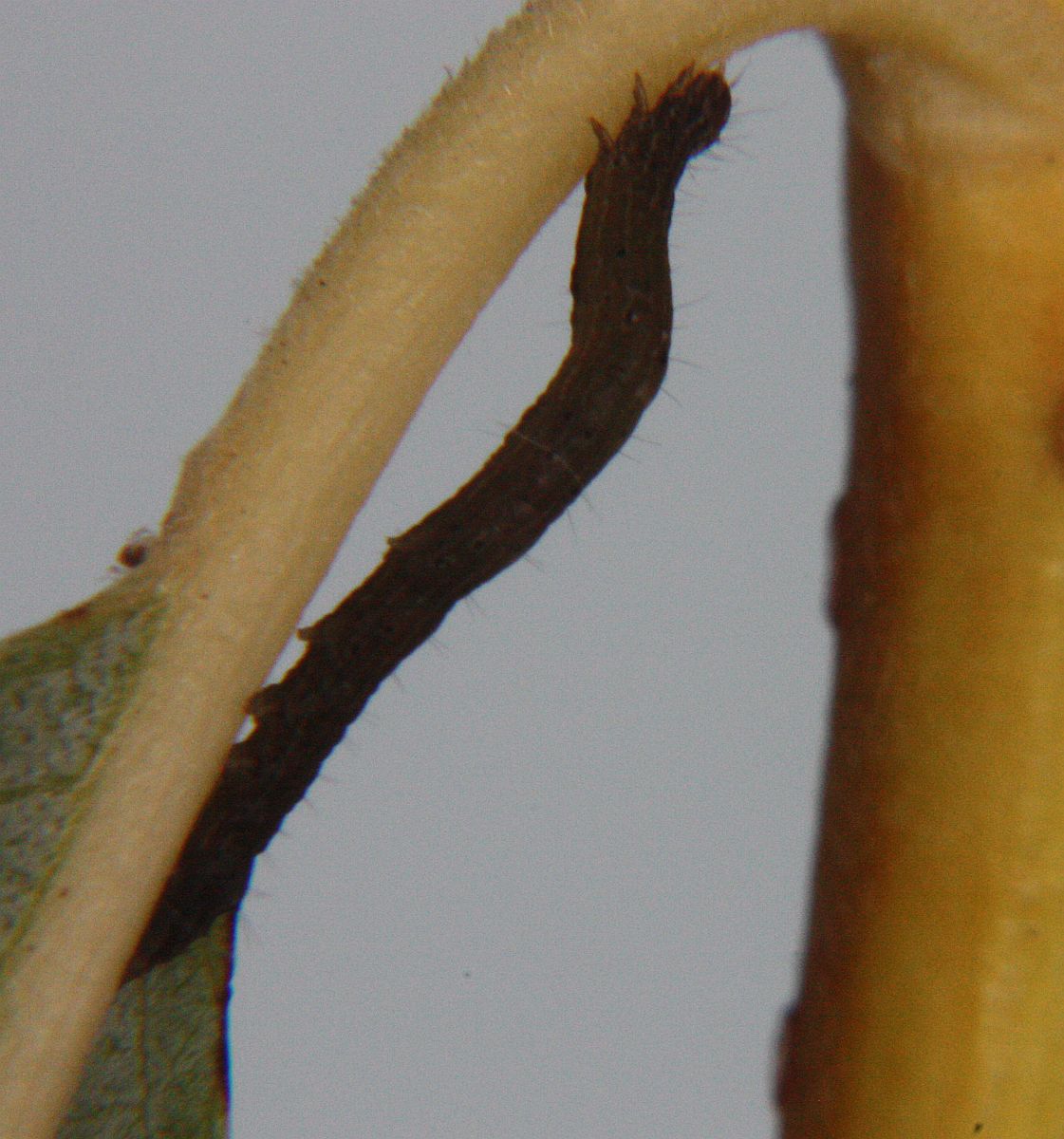2017 August 28
Reminder: Please send images as attachments in .jpg format. Please!!!!
Jeremy Tatum writes: Recently I have repeatedly photographed (August 18, 20 and 24) a woolly bear caterpillar, in the belief that it was a “lifer” for me. However, it has now reached its final instar, and I realize that it is a Yellow Woolly Bear, or Virginia Ermine, by no means a lifer. Assuming the final instar is number five, the August 18 photograph (third instar) showed a red dorsal stripe, and the August 20 photograph showed blackish hairs on the thoracic segments, both features that were unfamiliar to me. However, the final instar, shown below, shows that it is the familiar Yellow Woolly Bear. As soon as I realized this I offered it some Plantago to eat, which it obviously relished.

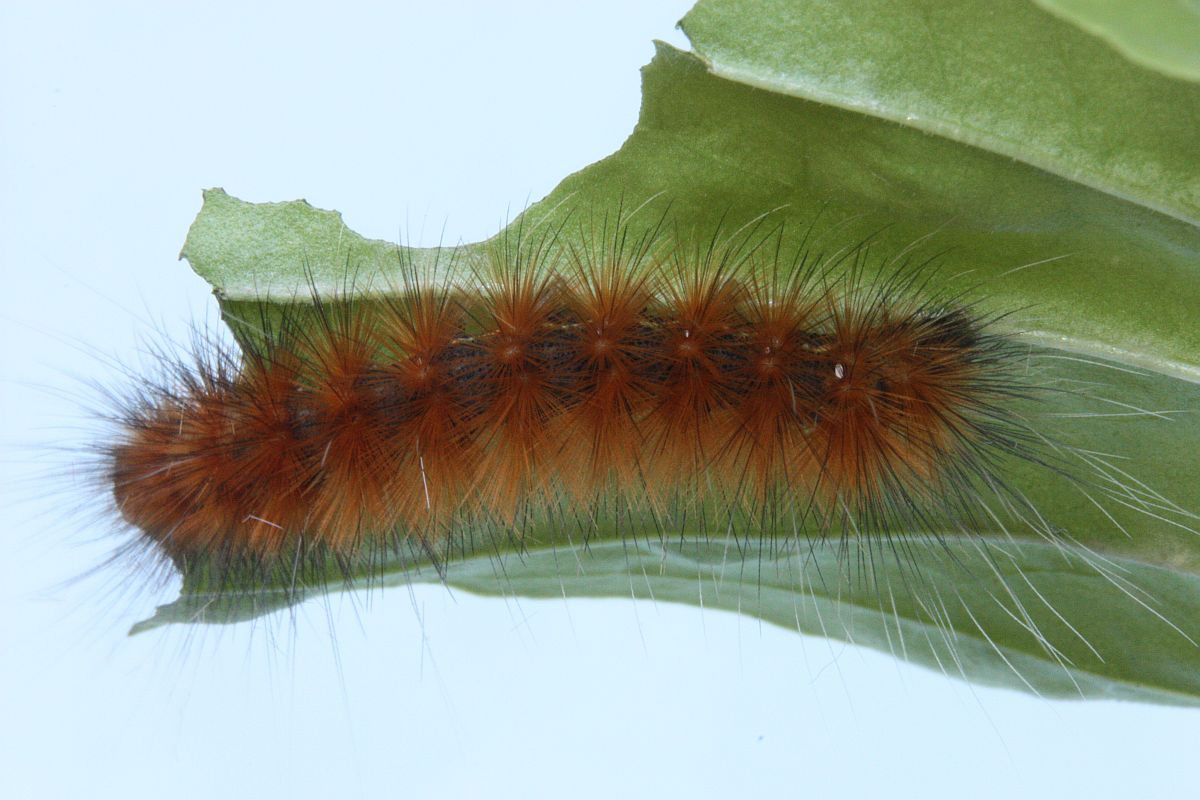
Yellow Woolly Bear Spilosoma virginica (Lep.: Erebidae – Arctiinae) Jeremy Tatum
The apparent geometrid-like caterpillar shown on August 24 is now a little larger, and is now obviously not a geometrid. It looks as though it may be on its way to being something quite exciting. Maybe Erebidae. [Added later – Yes, Zale, Erebidae]

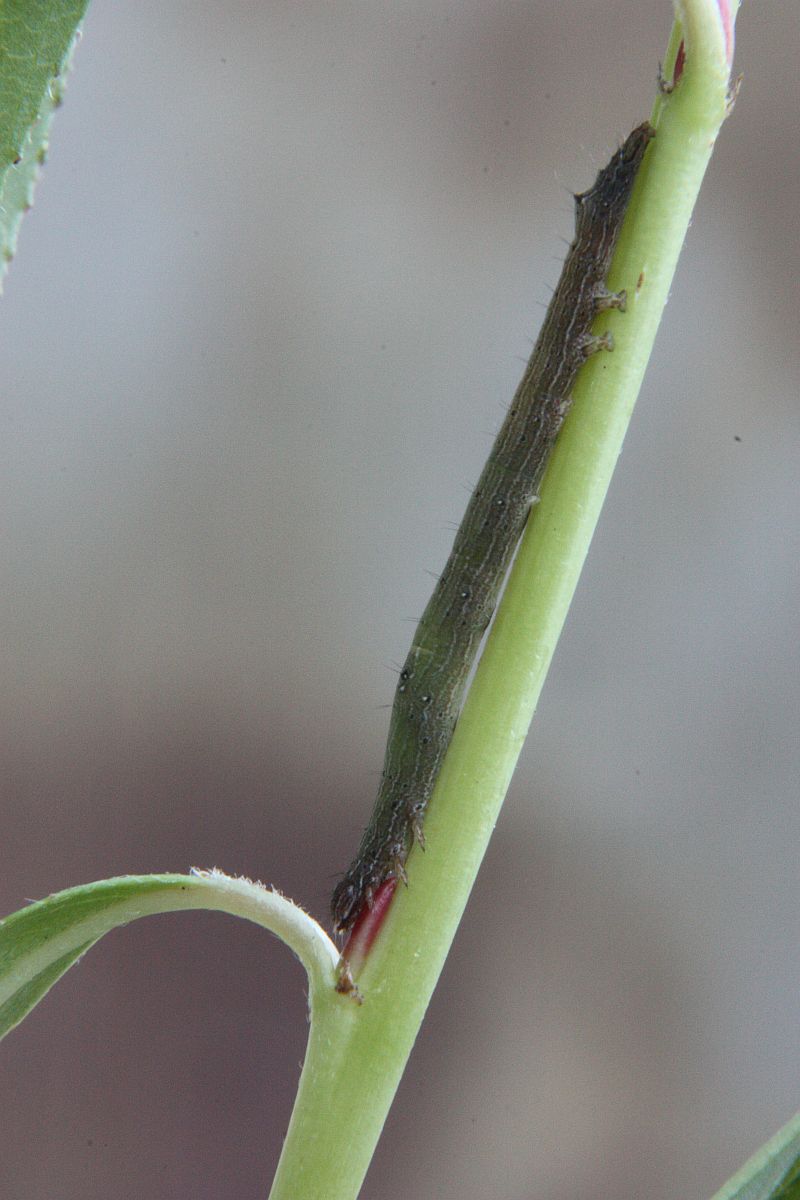
Zale sp. (Lep.: Erebidae) Jeremy Tatum
Jeremy continues: There were two adult Neoalcis californiaria outside my back door in Saanich this morning – remarkable for their difference in size. One was 43 mm wingtip to wingtip, and other was just 35 mm.
Jochen Moehr photographed a grasshopper in Metchosin on August 26. Claudia Copley’s “best guess” (probably a good one!) is Camnula pellucida. (It has obviously hopped up here from the centre of the Earth. ERB enthusiasts will know what I’m referring to.)

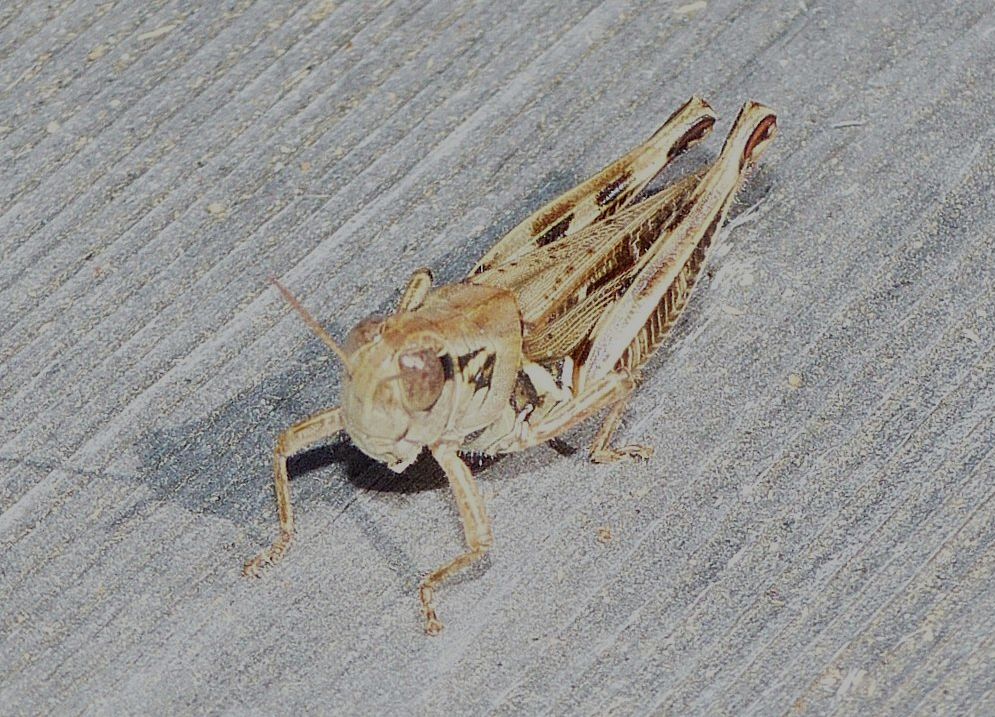
Camnula pellucida (Orth.: Acrididae) Jochen Moehr
Ren Ferguson writes: I just returned from Saturna Island where I was camping at Narvaez Bay from August 24-27th. The Red Alders that overhung our site had large numbers of sawfly larvae busily feeding on the leaves. Some branches were denuded completely. When I pulled a branch down to photograph them they all went into a defensive pasture in unison — raising their curled rear ends. It was interesting to watch. I woke in the night and thought it might be raining but seeing stars through the tent window, I realized that it was the frass from the larvae that was raining down! I have never seen this species before and would be interested to learn more about them. (Photograph and identification below.)
Ren continues: This is a late piece of information but when I was doing a bird survey on Mount Tuam on Salt Spring on August 1st, I witnessed the largest number of Common Woodnymphs on the wing in any one area that I have ever seen. There were over thirty in a 100 metre radius from the summit.

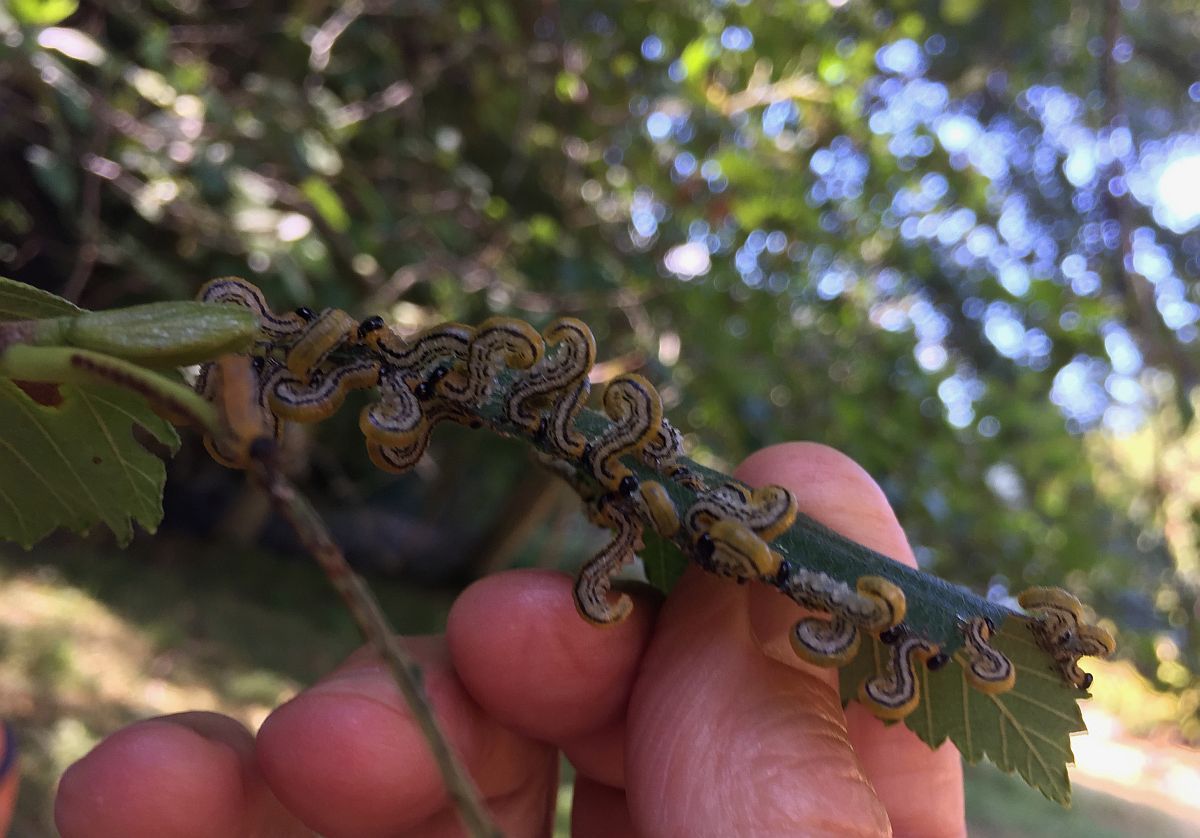
Hemichroa crocea (Hym.: Tenthredinidae) Ren Ferguson
Jeremy Tatum writes: Here are 596 eggs of a Large Yellow Underwing moth from an Aspen leaf at Bow Park (Saanich) this morning. You will notice that a few of them are darker than the others. These darker ones are probably hatching even as I type.

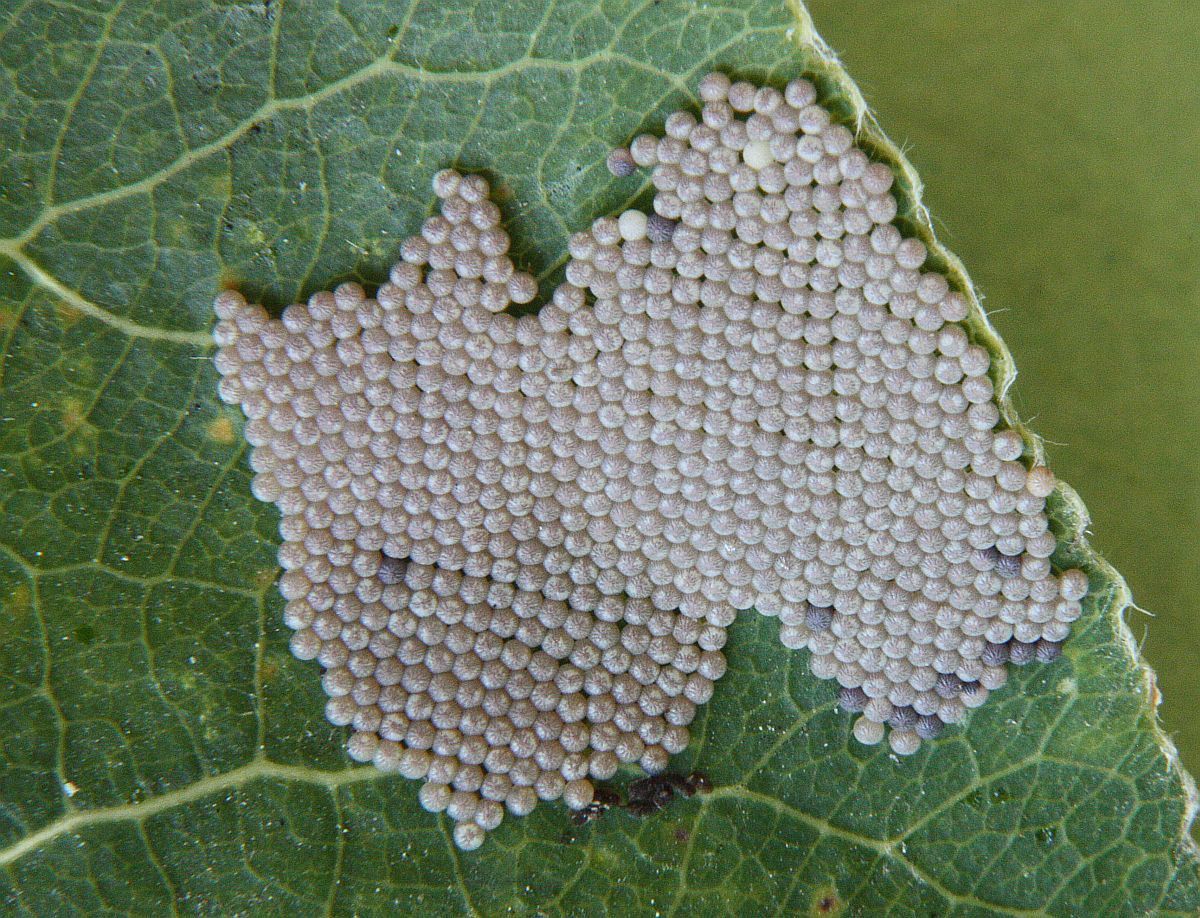
596 ova of Large Yellow Underwing Noctua pronuba (Lep.: Noctuidae) Jeremy Tatum
Mark Wynja writes: At 11:30 am on August 27th I went to Paradise Meadows. I saw 1 Hoary/Zephyr Comma and 1 Green Comma. Also present there were at least 6 Mariposa Coppers, and several Hydaspe Fritillaries. Nearby, along Alpine Road (NW of the parking lot for Paradise Meadows) were 2 Hoary/Zephyr Commas and 1 Green Comma, 1 Lorquin’s Admiral, and 3 Mariposa Coppers. At the parking lot at the base of the Sunrise Quad Chairlift was a fresh Painted Lady, at least 5 Anna Blues, 2 Mariposa Coppers and 1 Branded Skipper. About 20 Cabbage Whites were seen throughout the area.

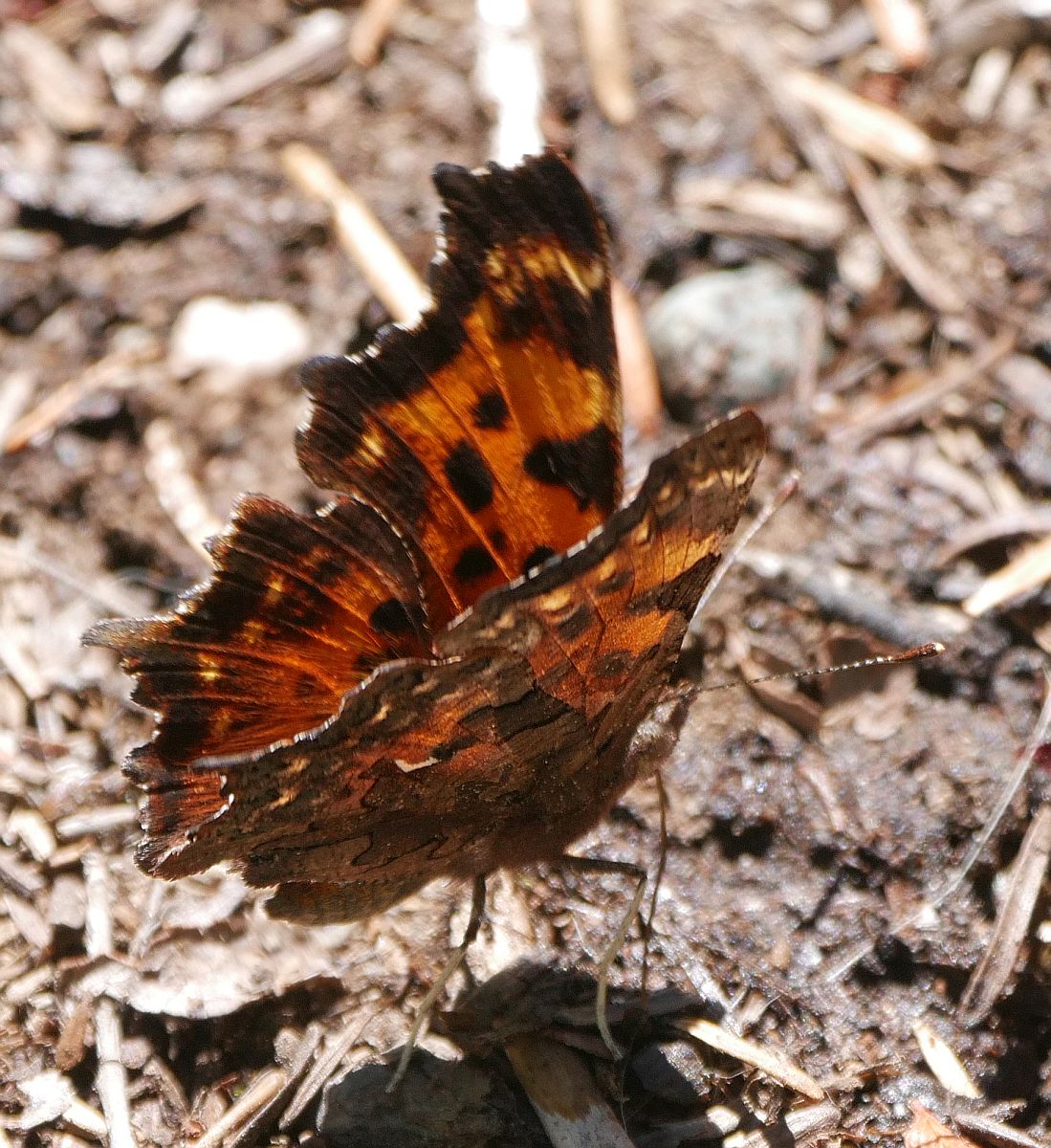
Green Comma Polygonia faunus (Lep.: Nymphalidae) Mark Wynja

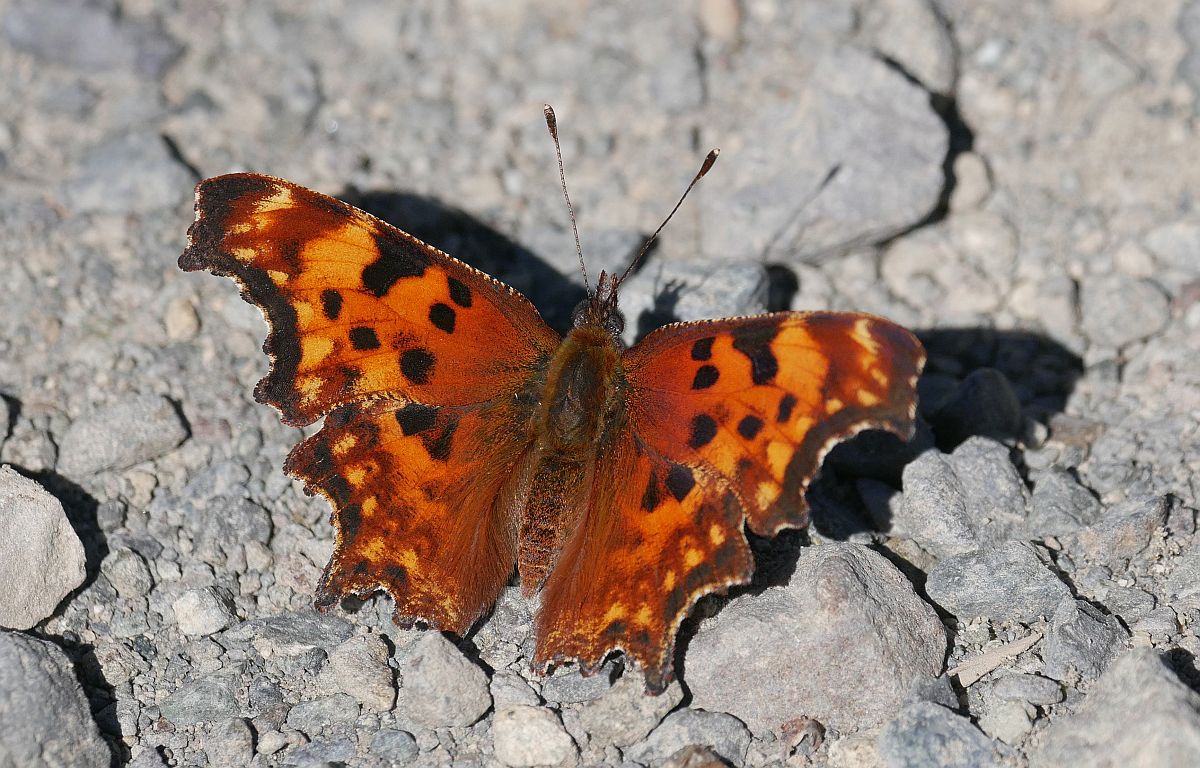
Hoary Comma Polygonia gracilis (Lep.: Nymphalidae) Mark Wynja

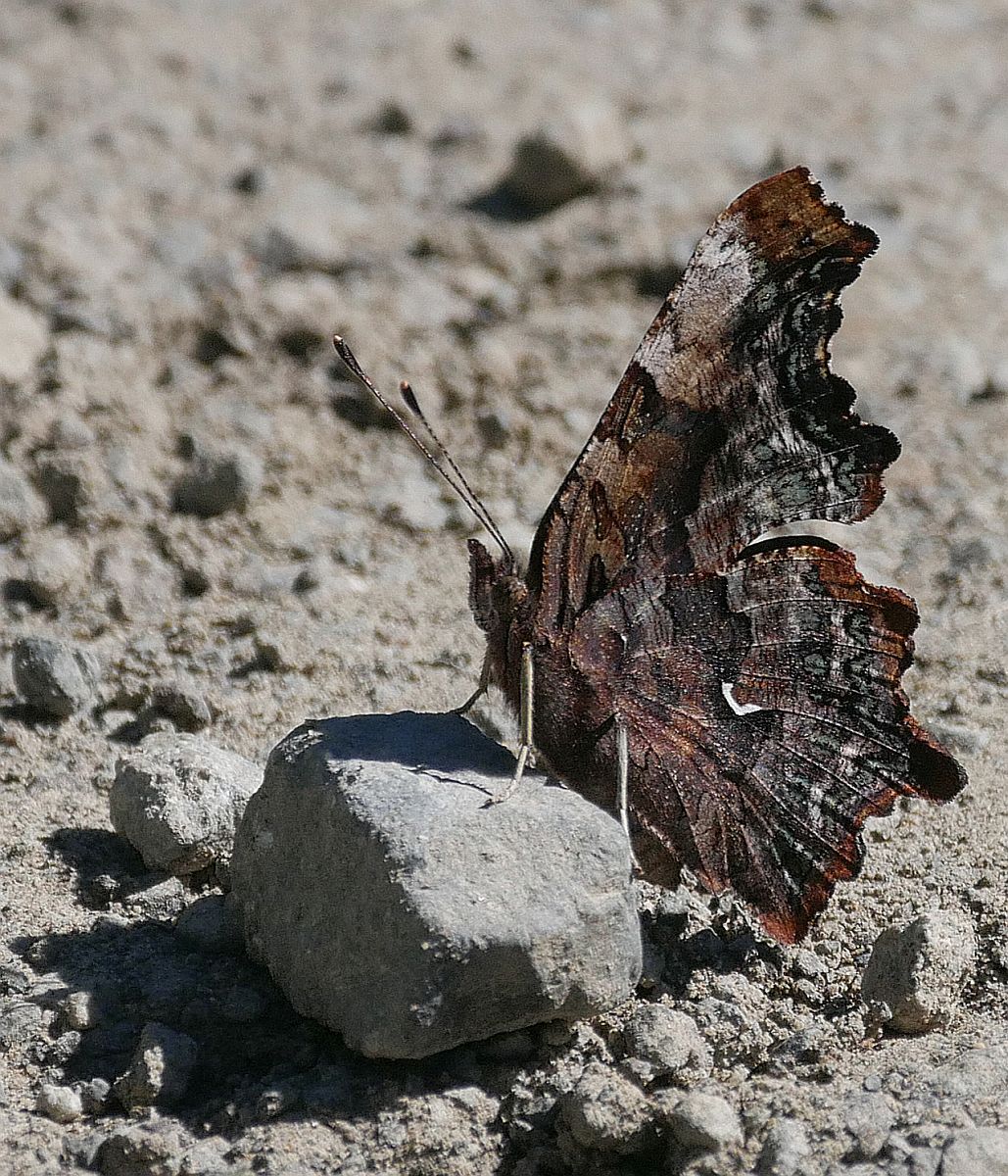
Green Comma Polygonia faunus (Lep.: Nymphalidae) Mark Wynja

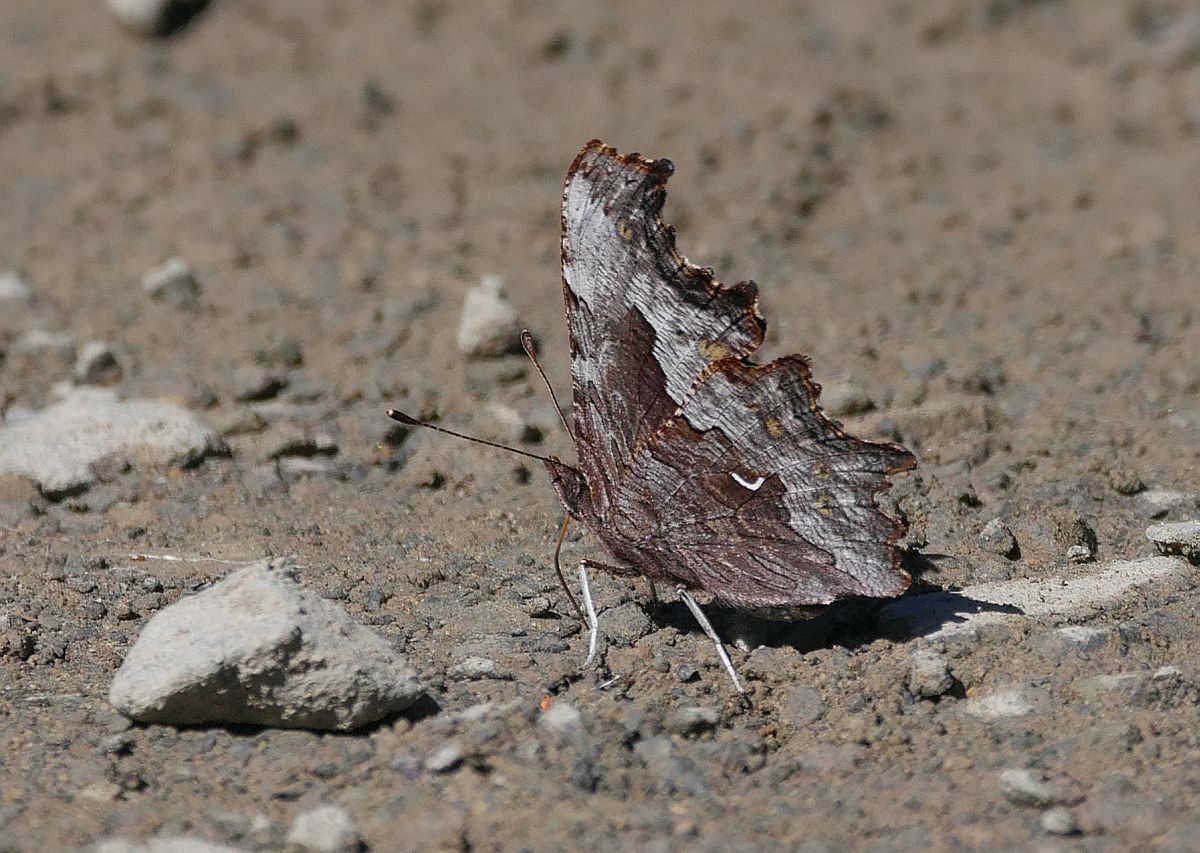
Hoary Comma Polygonia gracilis (Lep.: Nymphalidae) Mark Wynja

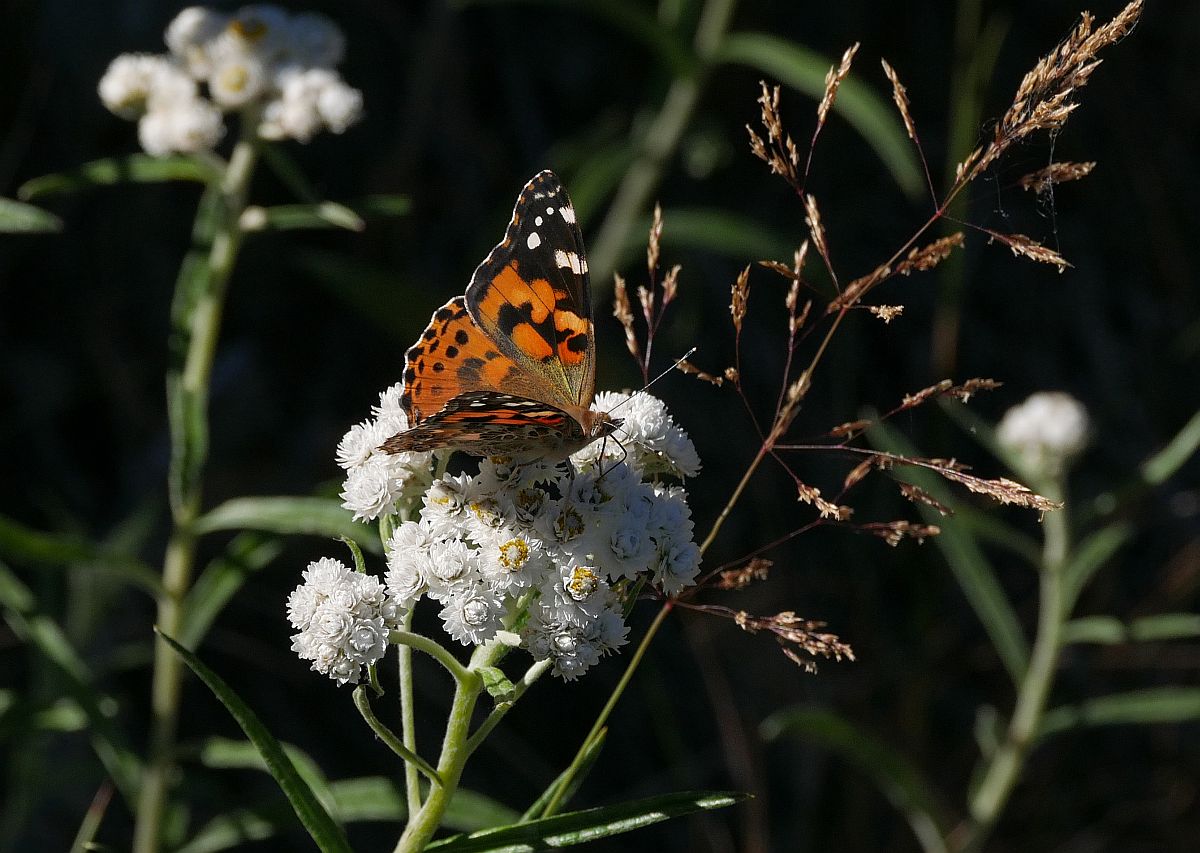
Painted Lady Vanessa cardui (Lep.: Nymphalidae) Mark Wynja

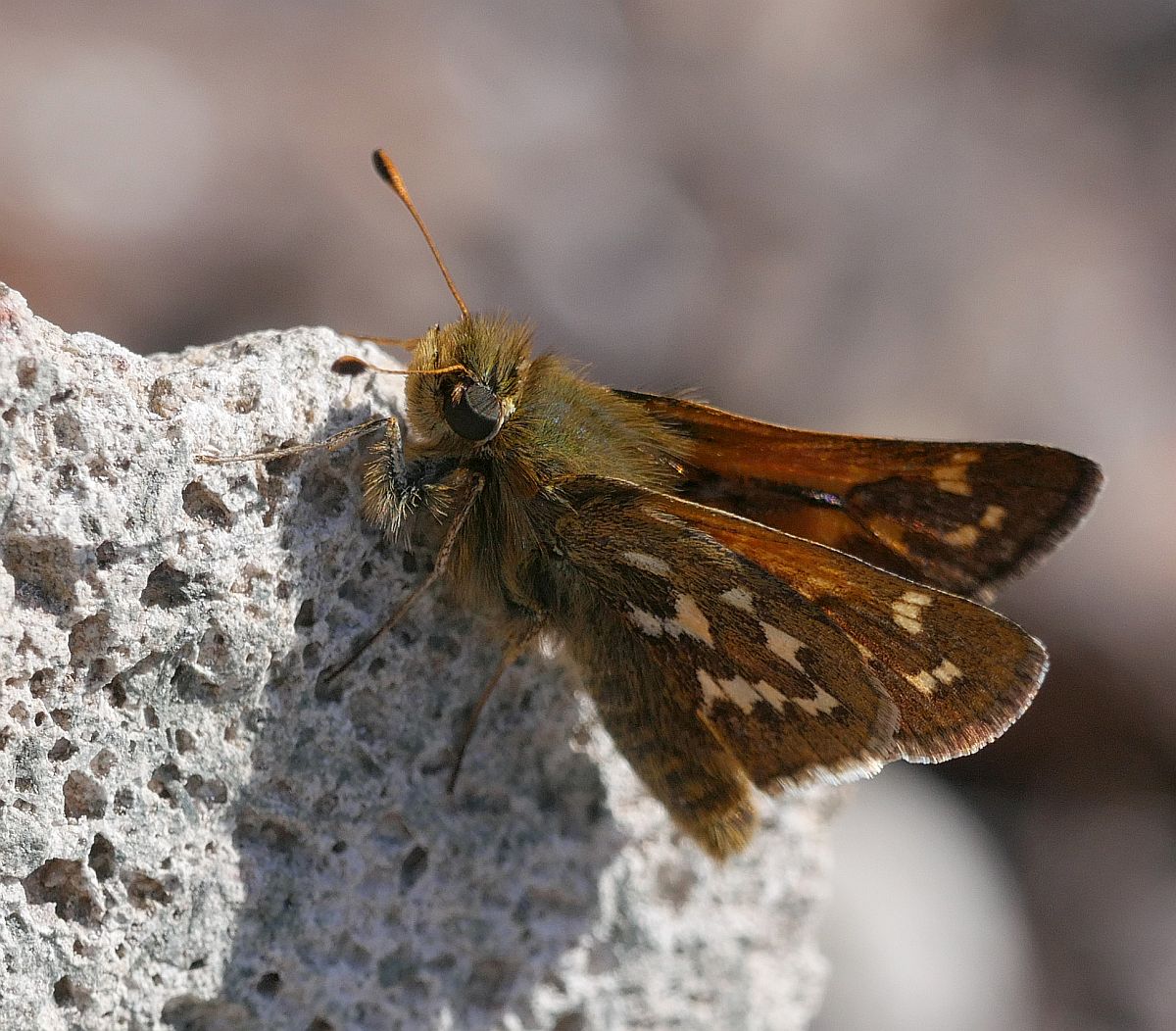
Branded Skipper Hesperia comma (Lep.: Hesperiidae) Mark Wynja
More photographs and observations in the queue – for tomorrow! Jeremy

